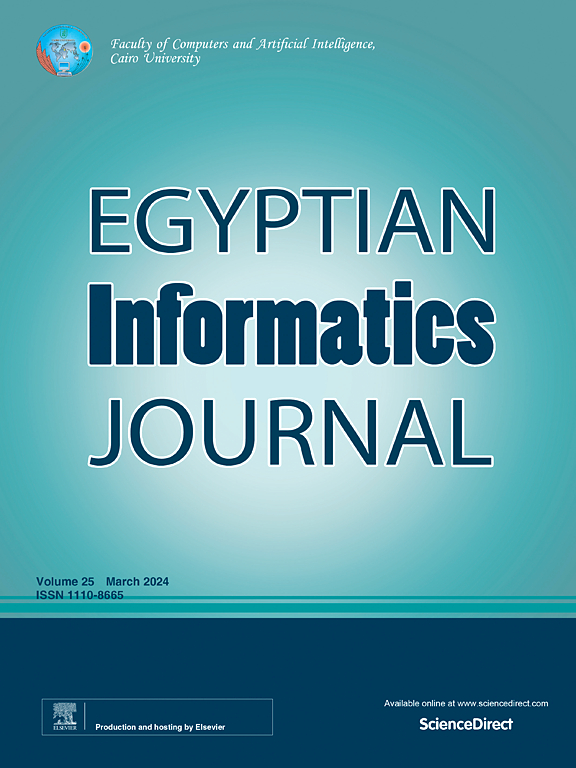Machine learning models for enhanced stroke detection and prediction
IF 4.3
3区 计算机科学
Q1 COMPUTER SCIENCE, ARTIFICIAL INTELLIGENCE
引用次数: 0
Abstract
Stroke detection plays a vital role in medical diagnostics, where timely and accurate identification can improve patient outcomes. This research evaluates the performance of three machine learning models—OzNet-mRMR-NB, Logistics Regression, and an Ensemble CNN—using medical images for stroke prediction. The OzNet-mRMR-NB model integrates VGG19 for feature extraction, mRMR for feature selection, and Naive Bayes for classification, while Logistic Regression processes flattened feature vectors. The Ensemble CNN, leveraging ResNet and VGG19, outperforms the other models with a testing accuracy of 92.43 %, an AUC score of 0.92, precision of 0.93, and an F1-score of 0.92. Additionally, recall for both the Ensemble and OzNet models was 0.93, highlighting the Ensemble model’s capacity to sustain a robust balance between specificity and sensitivity. These results highlight the advantages of combining diverse CNN architectures for improved accuracy and generalizability. This research advances automated stroke detection, with potential clinical applications for timely and informed decision-making. Future work will refine the ensemble approach for broader clinical adoption across diverse patient populations.
增强脑卒中检测和预测的机器学习模型
脑卒中检测在医疗诊断中起着至关重要的作用,及时准确的识别可以改善患者的预后。本研究评估了三种机器学习模型- oznet - mrmr - nb, logistic回归和集成cnn -使用医学图像进行脑卒中预测的性能。OzNet-mRMR-NB模型集成了VGG19用于特征提取,mRMR用于特征选择,朴素贝叶斯用于分类,而逻辑回归处理扁平特征向量。利用ResNet和VGG19的Ensemble CNN的测试准确率为92.43%,AUC分数为0.92,精度为0.93,f1分数为0.92,优于其他模型。此外,Ensemble和OzNet模型的召回率均为0.93,突出了Ensemble模型在特异性和敏感性之间保持稳健平衡的能力。这些结果突出了将不同的CNN架构结合起来以提高准确性和泛化性的优势。这项研究推进了自动化脑卒中检测,在及时和知情决策方面具有潜在的临床应用。未来的工作将改进集成方法,使其在不同患者群体中得到更广泛的临床采用。
本文章由计算机程序翻译,如有差异,请以英文原文为准。
求助全文
约1分钟内获得全文
求助全文
来源期刊

Egyptian Informatics Journal
Decision Sciences-Management Science and Operations Research
CiteScore
11.10
自引率
1.90%
发文量
59
审稿时长
110 days
期刊介绍:
The Egyptian Informatics Journal is published by the Faculty of Computers and Artificial Intelligence, Cairo University. This Journal provides a forum for the state-of-the-art research and development in the fields of computing, including computer sciences, information technologies, information systems, operations research and decision support. Innovative and not-previously-published work in subjects covered by the Journal is encouraged to be submitted, whether from academic, research or commercial sources.
 求助内容:
求助内容: 应助结果提醒方式:
应助结果提醒方式:


